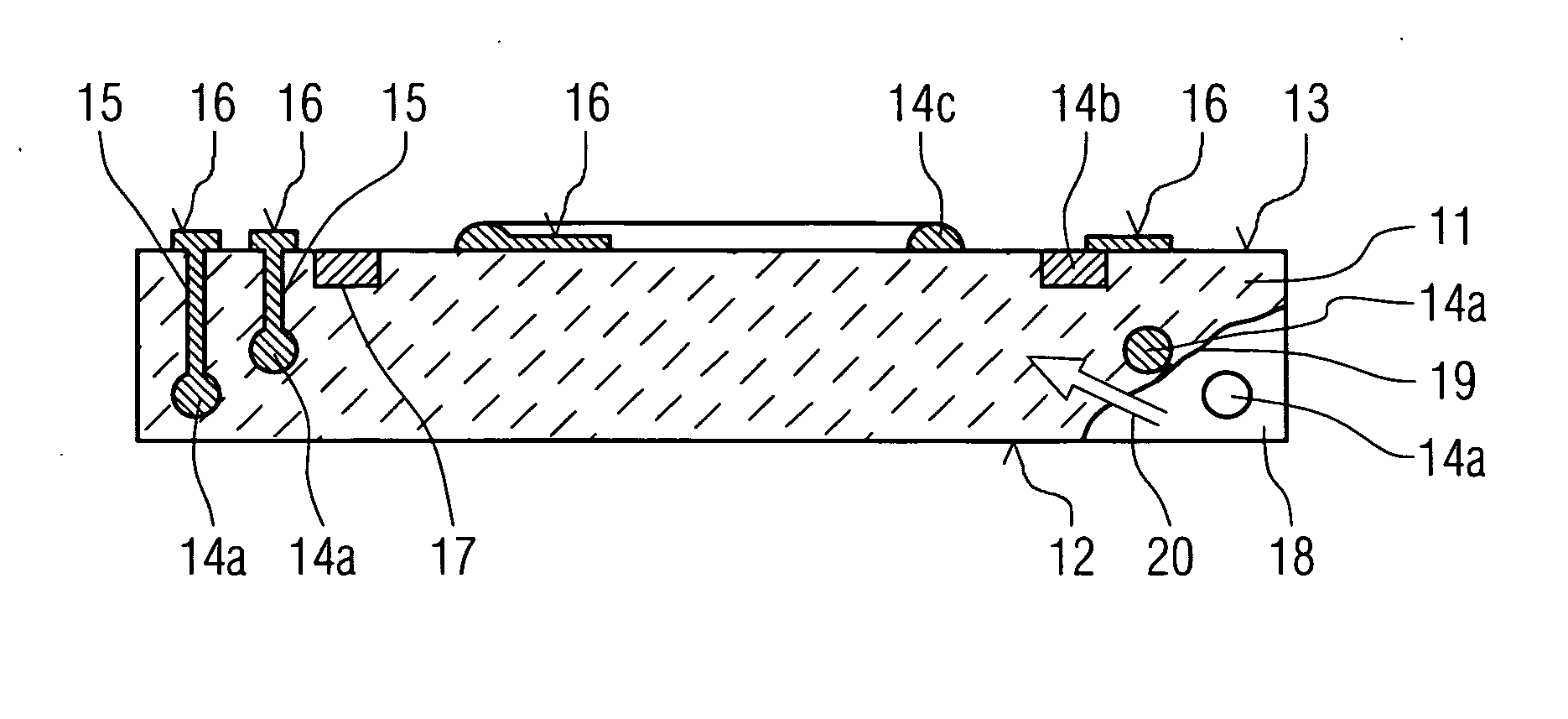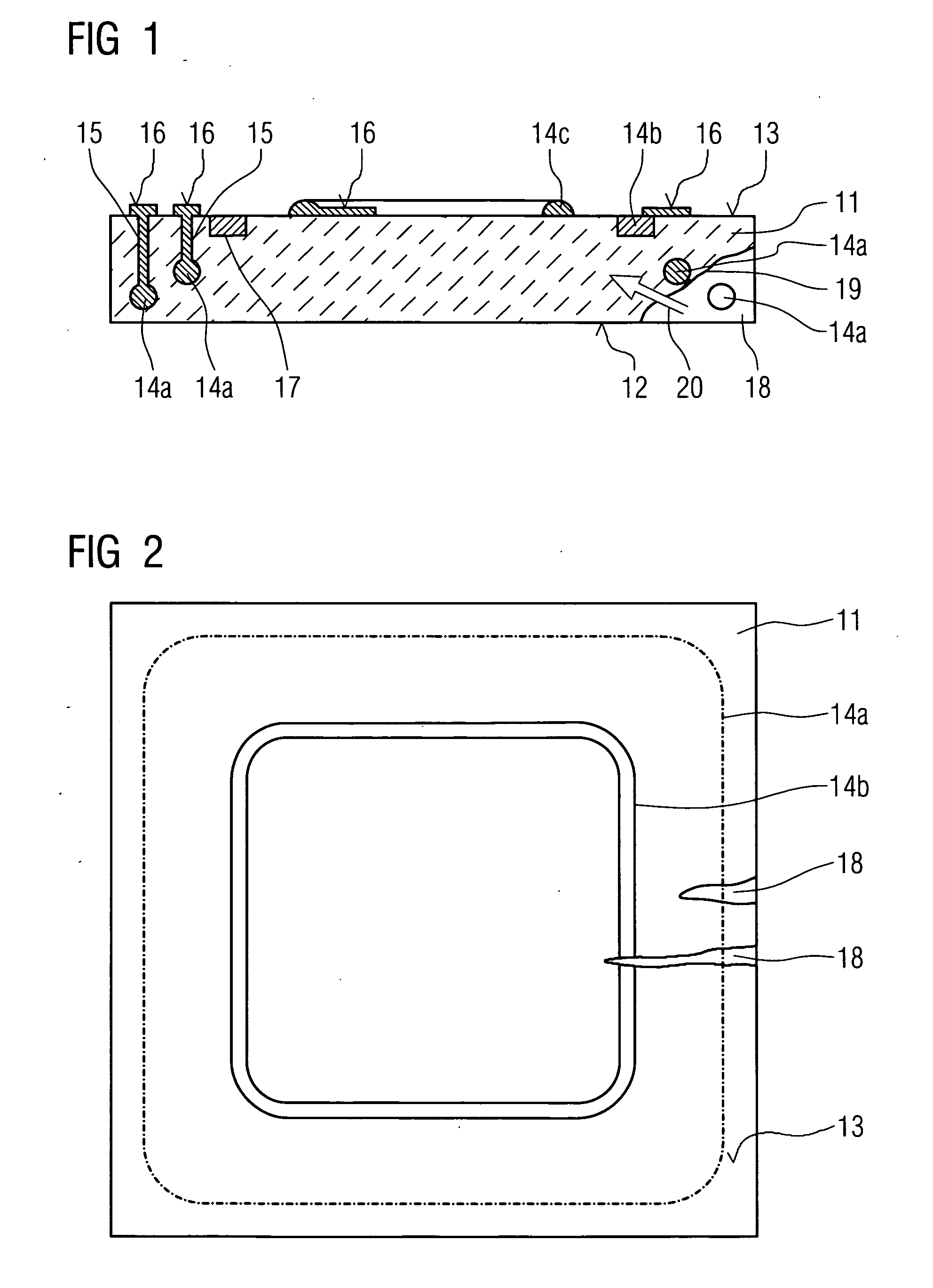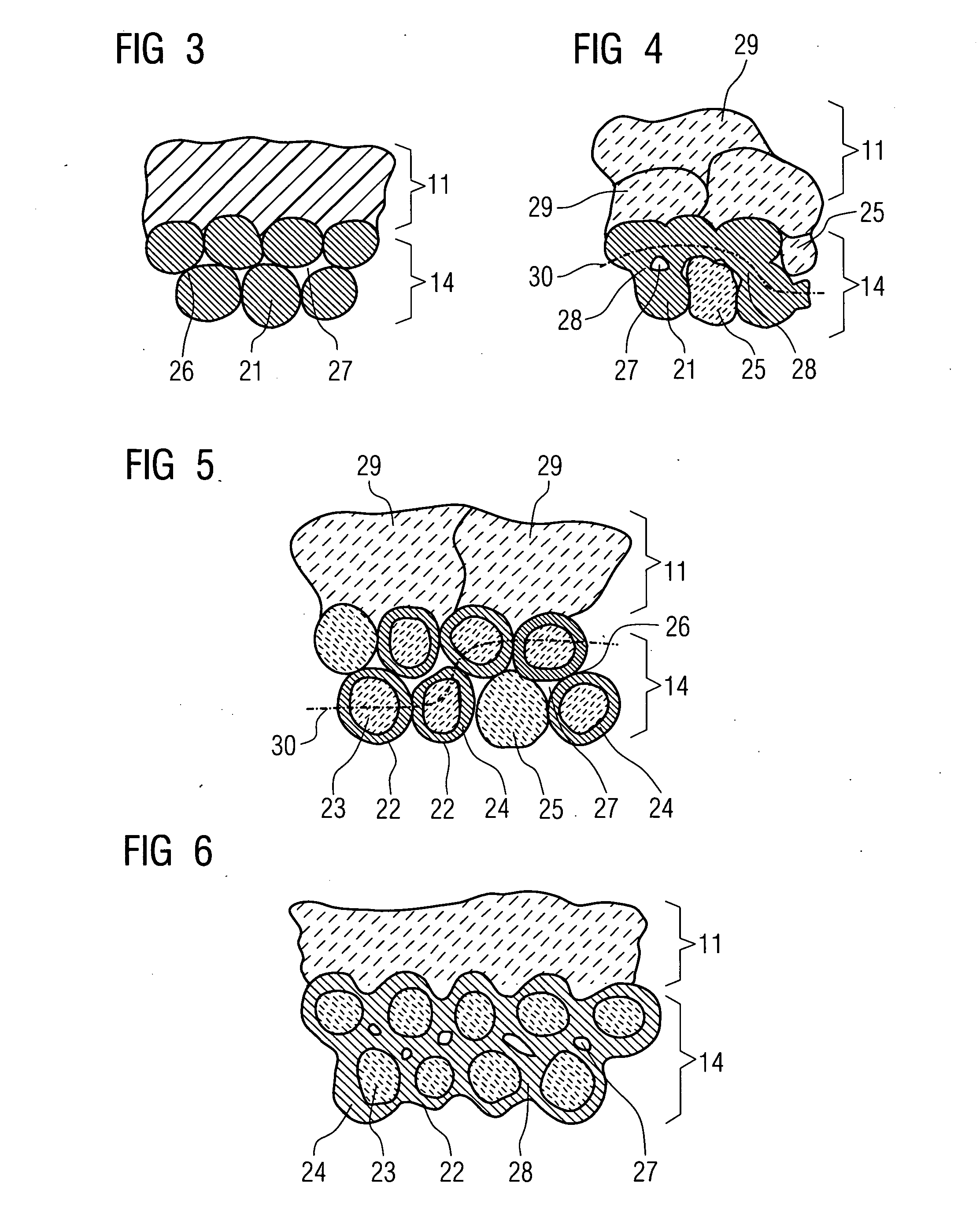[0010]It is provided that the particles consist of an electrically insulating core with a metallic shell. This means that, even if the
metal melts, a structure of the resulting electrical conductor is produced which is not solidly constituted but, but in addition to the pores formed between the particles, also has sub-regions which are filled by the electrically insulating core material of the particles. The resulting
sponge-like structure of the conductor also advantageously develops a particular sensitivity to mechanical damage.
[0011]In addition, it is provided that the core consists of a material that is matched to the material of the component in respect of its mechanical behavior, in particular of its
thermal expansion behavior. Particularly in the case of thermally stressed components such as
heat shield panels, the
advantage of this is that electrical conductors placed inside the component exhibit a
thermal expansion behavior matched to the thermal expansion behavior of the surrounding component. This enables stresses that would occur due to differential thermal expansion of two different materials, and could result in mechanical overloading of the component, to be avoided. In general,
metallic materials have, for example, a higher coefficient of thermal expansion than
ceramic components, which makes it more difficult to use metallic conductors in
ceramic heat shield panels. For example, in addition to stressing a component, differential thermal expansion of component and electrical conductor also causes the measurement result to be obtained by means of the electrical conductor to be falsified if the latter is deformed by the stresses occurring. Therefore, by matching the thermal expansion behavior of electrical conductor and component, the sensitivity of the measurement method can also be improved to the extent that the possibility of measurement errors occurring is reduced. It is particularly advantageous to select an identical material for core and shell, as this ensures optimum matching of the mechanical properties of the electrical conductor and the surrounding component.
[0013]According to a particular embodiment of the invention it is provided that the particles with the metallic surface in the electrical conductor are present mixed with particles totally consisting of an electrically insulating material, in particular the material of the component. This advantageously ensures that the filling degree of
metal in the electrical conductor is further reduced. In addition to the pores between the particles or rather any non-metallic cores of the particles, sub-regions are then also present in the electrical conductor which are constituted by the particles consisting wholly of an electrically insulating material. Due to the reduction of the filling degree of metallic material in the electrical conductor, the latter is, according to the mechanism already described, advantageously even more sensitive to mechanical damage, thereby further increasing the sensitivity of the detection structure.
[0014]As already explained, using the detection structure is particularly advantageous if the mechanical damage to be detected is crack formation in the component, the conductor in this case running such that it is intersected by the likely crack growth. This advantageously ensures that the crack growth, when it has arrived at the surface of the conductor, preferably begins to split the conductor at right angles to its path, thereby producing the greatest possible change in the electrical properties of the conductor in relation to the progressive crack growth. This makes it possible to achieve a change in the electrical properties as soon as the crack has arrived at the conductor used as a detection structure and then progresses further.
[0016]It is particularly advantageous if a plurality of mutually independent conductors is provided which run at different spacings parallel to the surface. This not only ensures timely replacement of the component prior to failure of same, but also enables information about the condition of the component to be obtained at an earlier stage of crack propagation. If mutually independent conductors are present, progressive crack growth will reach adjacent independent conductors one after the other with increasing distance of the crack propagation front from the surface, thereby enabling the present course of the crack propagation front to be assessed.
[0018]According to a particular embodiment of the invention it is provided that the conductor runs in a loop. This can be advantageously placed along the edge of a component of flat design such as a heat shield panel, for example. Moreover, using looped conductors enables particularly characteristic signatures for high-frequency excitation to be produced which also change in an easily verifiable manner due to breakage of the loop in a particular crack growth
scenario.
 Login to View More
Login to View More 


